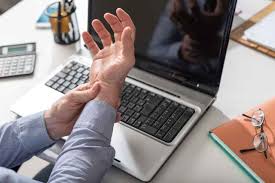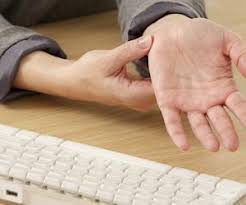2021-04-27
Computer elbow or computer wrist, also known as tennis elbow, medically known as superolateral colitis, is a common cause of elbow pain. Risk factors for the development of the tennis elbow have been extensively studied, and it is widely believed that in many people, the onset may be related to certain activities.
Some people's tennis elbow may be caused by short periods of strenuous exercises, such as playing tennis, lifting heavy objects, or cutting down garden hedges, but it is more common for sports with less impact. Using a computer keyboard or mouse for several hours a day can cause the extensor muscles in the forearm to get tired and start to wear out over time. While using a mouse is hardly as strenuous an exercise as a tennis ball, during the day it not only causes your muscles to contract, which leads to external pain in your elbow, but it may also cause your forearm to extend down into your wrist and hands.

1.Get plenty of rest. Avoid or reduce activities that cause pain. You should rest more, and you should also avoid or reduce any activities that cause or increase pain. If your job requires long hours of computer use, you can minimize typing time and give your body a chance to rest.
2.Take over the counter anti-inflammatories. You can buy over-the-counter anti-inflammatory (such as ibuprofen) from supermarkets and pharmacies that usually relieve pain.
3. Stretching. Stretching will help relieve the pain and keep the elbow moving to avoid stiffness. Stretching exercises can be helpful: straighten your arm, palm facing the floor, then gently bend your wrist down with your other hand, pulling it gently toward your body and holding for 15 seconds. Do this four to six times a day.
4. Massage. Massaging the area of the pain usually provides significant relief. Start at the top of the pain area on the outside of the elbow and using the index and middle fingers of the other hand, rub vigorously from side to side and gradually move towards the hand in the pain area. Do this four to six times a day.
5. Ice compress: Ice can help tame inflammation in muscles and stimulate tissue to promote healing. If it helps, you can ice compress multiple times.

1. Choose the right mouse. Make sure the mouse is nearby and easy to use. The mouse should be held at your side with your arms close to your body. Keep a straight line between your hand and forearm. Also, make sure the mouse fits your hand. If it is too small, the fingers, hands, and wrist muscles must be tense to use it, and your hands should be as relaxed as possible.
2. Position the keyboard correctly. Make sure the keyboard is right in front of you. Your wrists should be straight, not bent up or down. Do not raise the back of the keyboard, it can actually increase the pressure on the wrists. To keep your hands and arms in proper alignment, try lowering the back of your keyboard or adjusting your chair.
3. Wear wrist protectors. Your hand should be level with the keyboard. If not, use wrist pads, which will not only make your wrist more comfortable but also avoid tennis elbow while typing.
4.Keep your shoulders relaxed. Don't stick your shoulders up around your ears while you work. Remind yourself to relax. Muscle tension in the shoulders radiates down into the arms.
5. Keep your desk clean. Clutter makes you reach and stretch more often. There should be clear space between the keyboard, mouse, and work area to minimize muscle work.
6. Stretch your fingers. Frequent curling of fingers can cause a writer's elbow. Stop every 30 minutes and stretch them out in your direction. Stand up and move your hands around to get the blood flowing in.
7. Maintain a 90-degree Angle. When working on a computer, the forearm should form a 90-degree angle to the upper arm. If you find your forearms too low or too high, adjust your chair and keyboard for immobilization.
8.Keep your fingers aligned with your forearm. Use a rolled-up towel or another cushion to align the fingers with the back of the hand and the arms, and the fingers with the forearm. Our fingers tend to be higher than our wrists and arms. Using a rolled-up towel or another cushion to keep your fingers in line with the back of your hand and arms is similar to playing the piano.
9. Use a split keyboard. The split keyboard helps your hands keep their natural lines. We can raise the wrist slightly so that we can move with our fingers, which is very helpful. Putting my wrist on the computer actually aggravates the pain because my fingers are lifted and have to move without the help of my arm, which causes stress.
10. Tone your muscles. Building muscle strength can help prevent the elbow from happening on the head or in the future. Try squeezing the tennis ball 25 times, or making a fist with your hand, then bending your wrist forward and backward with just one hand.
Request a Quote
Request a Quote